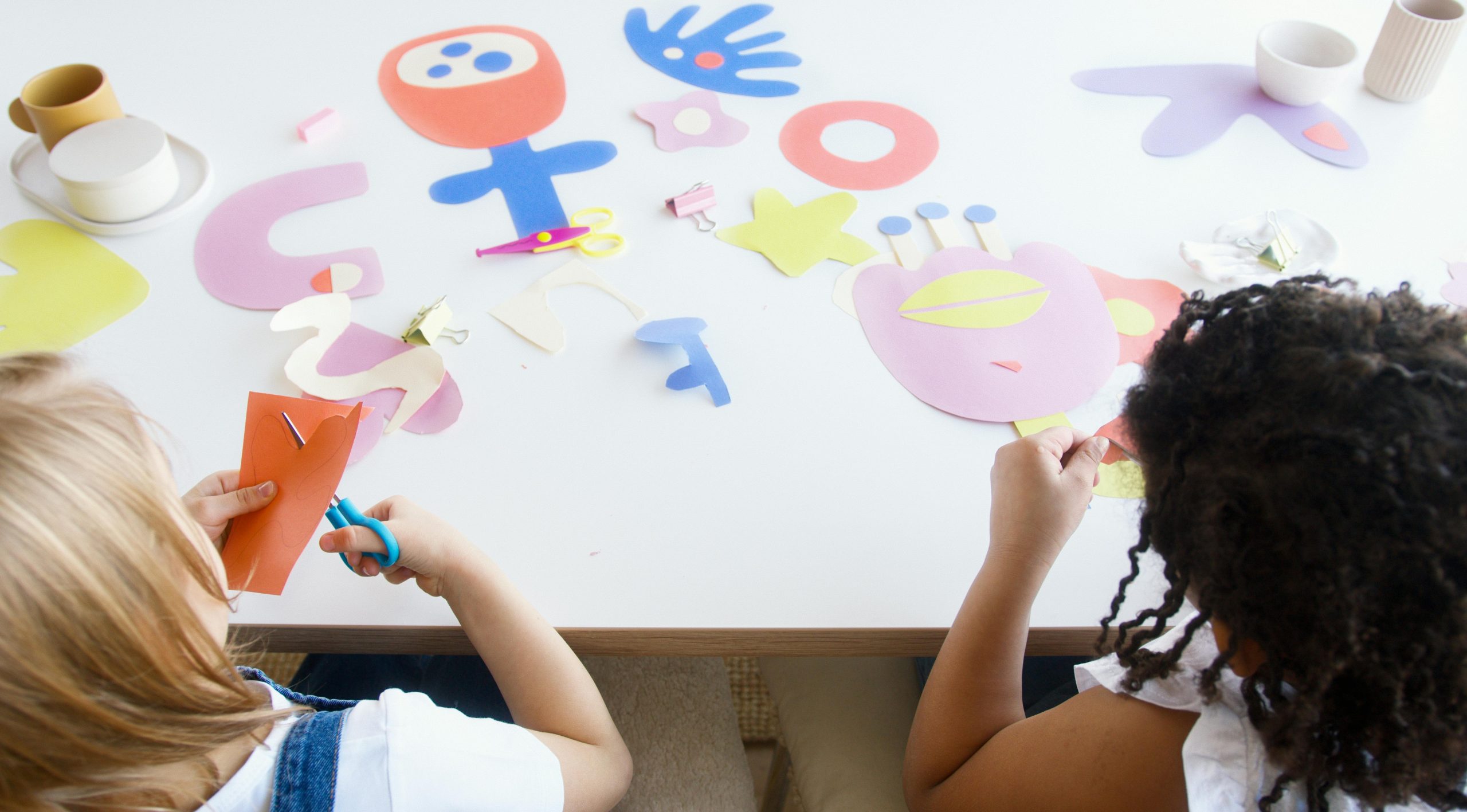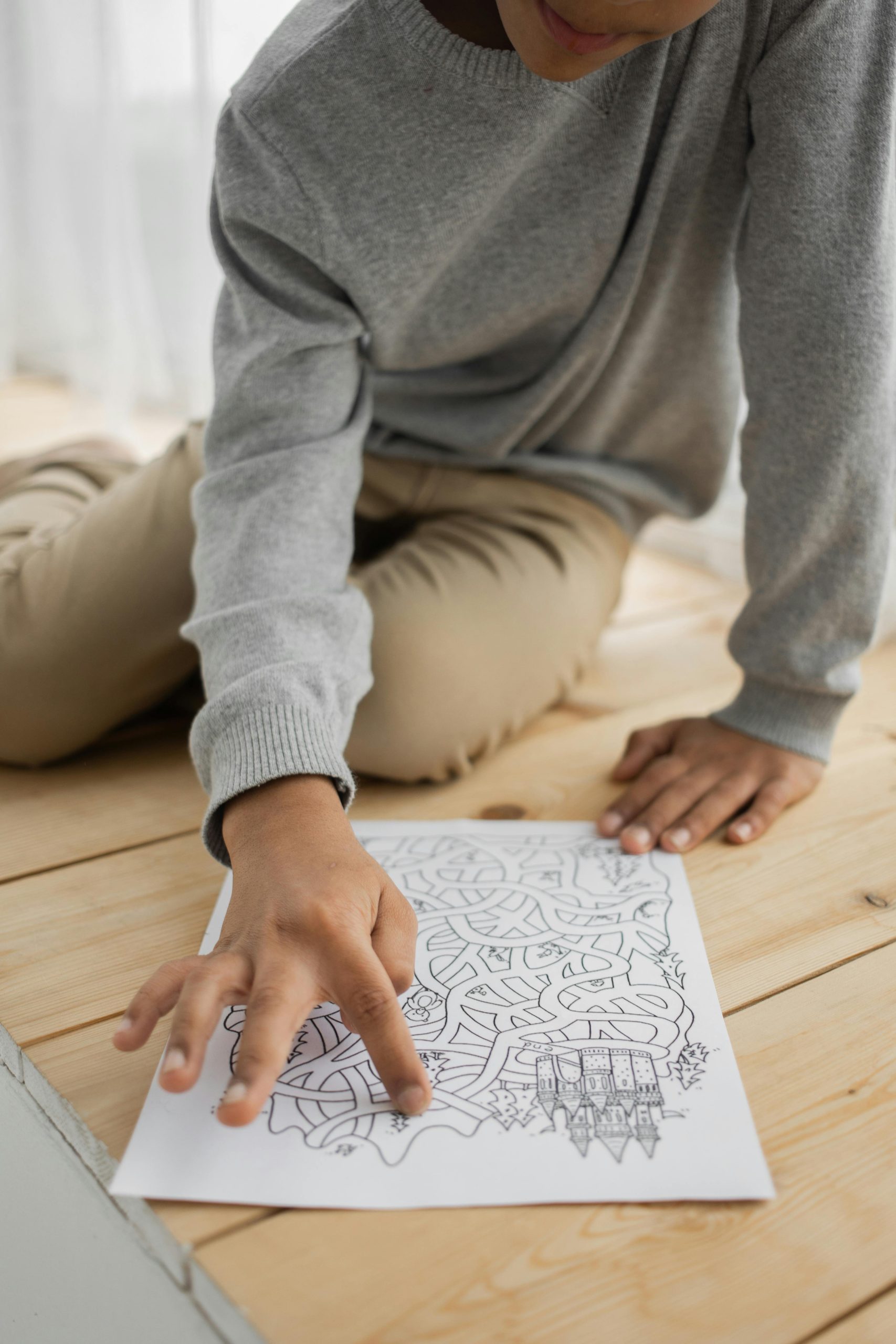Opening Doors: The Impact of the Arts on Children’s Development

The visual, acting, and literary arts, in their whole, are not only extracurricular pursuits; rather, they are integral to a child’s overall development. Children that participate in the arts have significant advantages in their social connections, emotional health, and cognitive abilities. These artistic endeavors provide one-of-a-kind chances for communication, comprehension, and expression while building the basis for enduring abilities. A complex tapestry of learning and development is woven together by the imaginative exploration of storytelling, the collaborative spirit of theater, and the emotional resonance of art.
In this journey, parental encouragement is essential. Parents provide the conditions for their children to explore, invent, and flourish by cultivating an atmosphere that promotes creativity. A parent’s encouragement and excitement can kindle in a youngster a passion that burns brightly for years to come. Accepting the arts, then, is a significant investment in a child’s future success and happiness as well as an investment in their current interests.
Feeding Your Child’s Interest in Artistic Expression

An Investigation into the Range of Art Forms
- Visual arts, such as sculpture and painting
- The performing arts, encompassing theater, dance, and music
- Poetry and storytelling are examples of literary arts
Art Introduced in a Calm Way
Introducing your kids to a range of artistic mediums ought to be an enjoyable and stress-free experience. Take the family to local art galleries, see plays at the community theater, and read aloud during storytime at the library. These encounters have the potential to pique curiosity and intrigue, opening the door to more in-depth participation.
Spotting and Encourage Your Child’s Creative Potential
Youngsters will always gravitate toward things that they find interesting. Keep an eye on how your youngster responds to various artistic activities. Do they tell intricate stories, hum along to music, or sketch nonstop? Motivation is essential. Give them art supplies, sign them up for a dance class, or set up a comfortable reading area at home. Acknowledging and fostering their tendencies helps them grow emotionally and intellectually while also boosting their confidence.
The ultimate objective is to establish a safe space where your child can freely express and explore their artistic side. Your assistance can assist children in discovering and pursuing their passions, whether they find joy in the words of a novel, the movements of a dance, or the brushstrokes of a painting. This artistic discovery trip can provide them with new insights, abilities, and a profound sense of fulfillment, enriching their life.
Building a Home Environment That Encourages Art

One cannot stress how crucial it is to create an environment that inspires innovation. Young minds are nurtured by such an environment, which serves as a fertile ground for the seeds of creativity and imagination. It involves turning a little area of your house into a haven for creative expression where concepts can grow unrestrained.
Assembling a Creative Corner
Set aside a particular space in your house as an art corner to start. Large room is not necessary for this; a little nook would do, provided it is tidy and welcoming. Provide it with easily available supplies such as crayons, watercolors, paper, and clay so that anyone can be inspired to create on the spur of the moment. Having a space like this inspires kids to create art anytime they feel inspired, which helps them develop a habit of expressing themselves artistically.
Art Activities: Organized versus Unstructured
In order to foster a child’s artistic journey, balance is essential. Technique and discipline are taught through structured activities, including drawing workshops or craft projects with predetermined results. Conversely, unstructured activities, in which kids are allowed to experiment with materials and make whatever they can think of, encourage creativity and individual expression. Children can explore their strengths and preferences while developing a well-rounded artistic skill set through this combination of planned and unstructured art activities.
Encouraging children to participate in these kinds of activities guarantees that they will not only learn the foundations of art but also feel empowered to try new things and find their own ways of expressing themselves. This method creates a strong, intimate bond with art, setting the stage for a lifetime appreciation and maybe a career in the arts.
To sum up, one of the most important things you can do to help your child’s artistic growth at home is to make your home an art-friendly space. By creating a space specifically for art and promoting a blend of organized and unorganized pursuits, you offer the resources and flexibility required for artistic development. Your child’s artistic abilities can really flourish in this supportive environment, enhancing their lives with the happiness and fulfillment that come from artistic expression.
Getting Past Our Hesitancy and Developing a Positive View of Art

Typical Causes of Hesitancy
Kids may be reluctant to participate in art projects because they are afraid of being judged, feel overawed by the variety of alternatives, or just don’t think they are creative enough. They may be reluctant to even begin since they are unfamiliar with the supplies and methods of art.
Means of Fostering a Positive Attitude
Establishing a nurturing environment is the first step in promoting a good outlook on art. Showcase a range of artistic mediums to begin with, emphasizing that there is no right or wrong way to create. Place more emphasis on the enjoyment and discovery that come with creating art than the final product. Give them easy, fun tasks that progressively increase their self-confidence. To boost their self-esteem, acknowledge and applaud their efforts and accomplishments, no matter how tiny.
Creating art projects with your child is another powerful tactic. This demonstrates to them that creating art is not only a worthwhile and entertaining endeavor but also that making mistakes and being a novice are acceptable. Talking about your own educational journey can be really comforting.
Delight and the Creation Process
It is essential to concentrate on the delight and creative process. Remind your child that creating a masterpiece every time is not the goal of art; rather, it is about them expressing themselves and trying out new ideas. Encourage them to try out various tools and methods without worrying about criticism. This method aids in changing their attention from the product to the creative process, resulting in the development of a lifelong appreciation for the arts.
Encouraging Your Child’s Creative Path Without Putting Pressure on Them

The Thin Line Between Instigation and Distraction
It is important to provide support that is more akin to a gently prod than a forceful shove. Positive reinforcement, which celebrates the act of creation itself, should be the primary type of encouragement instead of concentrating just on the result.
Giving Constructive Criticism
Providing constructive criticism entails:
- highlighting positive aspects and subtly pointing out flaws that need work.
- Begin with compliments, then present recommendations as chances to try out novel concepts or methods.
This approach encourages a growth mentality by motivating rather than discouraging.
Appreciating Advancement and Work
To provide your child a sense of pride in their artistic endeavors, acknowledge their efforts and growth instead of their talent and accomplishments. Recognize the effort and time they have put into their job. This acknowledgement serves to highlight the importance of tenacity and inventiveness.
In Conclusion
The mind is sharpened and the soul is nurtured by art. It brings happiness and fortitude. Parents may help their child reach their full creative potential by providing a combination of independence and encouragement, which will lead to a voyage of exploration and expression. The significance of encouraging artistic pursuits without placing undue pressure on them and appreciating every stage of the creative process has been emphasized in this essay. Let’s embrace the arts as a crucial element of development and enjoyment and encourage our kids to paint their own roads.
Encouraging Your Child to Participate in the Arts FAQs
Yes, there are many affordable ways to encourage an interest in the arts, including utilizing free online resources, visiting public libraries for books and other materials, and attending community arts events or workshops. You can also look for second-hand supplies or recycle materials at home for art projects. Many communities offer scholarships or sliding scale fees for children’s art classes to make them more accessible.
Yes, participating in the arts can be a wonderful way for children to connect with others who share similar interests, fostering friendships based on mutual respect and understanding. Group classes, workshops, and performances provide opportunities for social interaction and collaboration, which can enhance their communication skills and self-confidence. This shared experience can be a foundation for lasting friendships and a sense of community.
Offer a variety of art-related activities and let your child choose which ones they want to explore, providing a pressure-free environment for them to discover their interests. By making art supplies readily available and setting aside regular times for creative activities, you can encourage exploration without making it feel like a requirement. Celebrating their efforts rather than focusing on the outcome helps keep the experience positive and enjoyable.
Research local art institutions, community centers, and schools, which often offer programs designed for children of various ages and skill levels. Online community boards, social media groups, and local newspapers can be valuable resources for finding information about upcoming art classes and workshops. Additionally, attending local art events and exhibitions can provide opportunities to connect with instructors and organizations that offer children’s programs.
Create an environment that nurtures creativity by providing diverse materials and resources for artistic expression, such as paints, clay, musical instruments, or writing tools. Designate a specific area in your home where they can freely engage in their art without worry about making a mess. Additionally, participating in art activities with your child can further inspire and motivate them.
Your child might show interest in the arts by frequently engaging in creative activities like drawing, playing music, or storytelling. This interest can manifest as a natural inclination towards exploring different forms of artistic expression or a keen enjoyment in art classes and activities. Encouraging them to explore various art forms can help you gauge where their true interests lie.
While formal education can provide structured learning and exposure to various techniques and art forms, it’s not the only way to foster an appreciation and skill in the arts. Informal experiences, such as family museum visits, attending performances, and practicing art at home, can be equally valuable. The key is to encourage a love for the arts, regardless of the setting, and to support continuous learning and exploration.
Participating in the arts can significantly enhance a child’s cognitive, emotional, and social development. It fosters creativity, improves academic performance by enhancing critical thinking and problem-solving skills, and boosts self-esteem and empathy by allowing them to express their feelings and understand others. Moreover, it can help in developing patience and perseverance as they learn new skills.
It’s normal for children’s interests to change as they grow and are exposed to new things. Encourage them to explore other art forms or take a break, as this can be a natural part of their creative journey and self-discovery. Maintaining an open dialogue about their interests can help you understand their evolving preferences and support them accordingly.
Digital arts offer a modern platform for creative expression and can play a significant role in a child’s artistic development by introducing them to contemporary forms of creativity. Engaging with digital arts can enhance their technological literacy alongside their artistic skills, preparing them for the future. It also provides a vast array of tools and mediums for exploration, from digital painting and animation to music production and graphic design.

Jasmine Duque-Love is a mother of one and a practicing physiotherapist with a Phd in Physiotherapy

